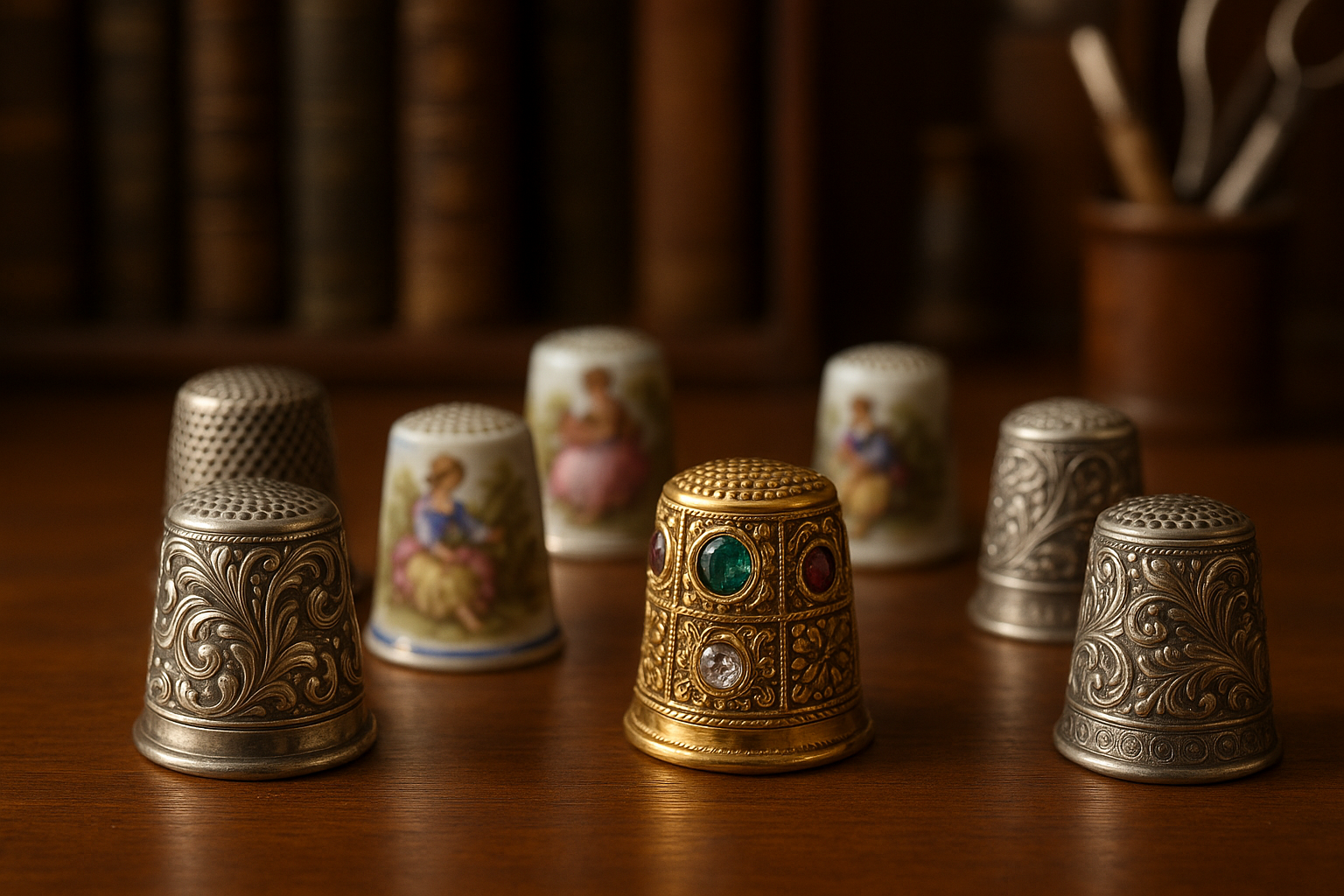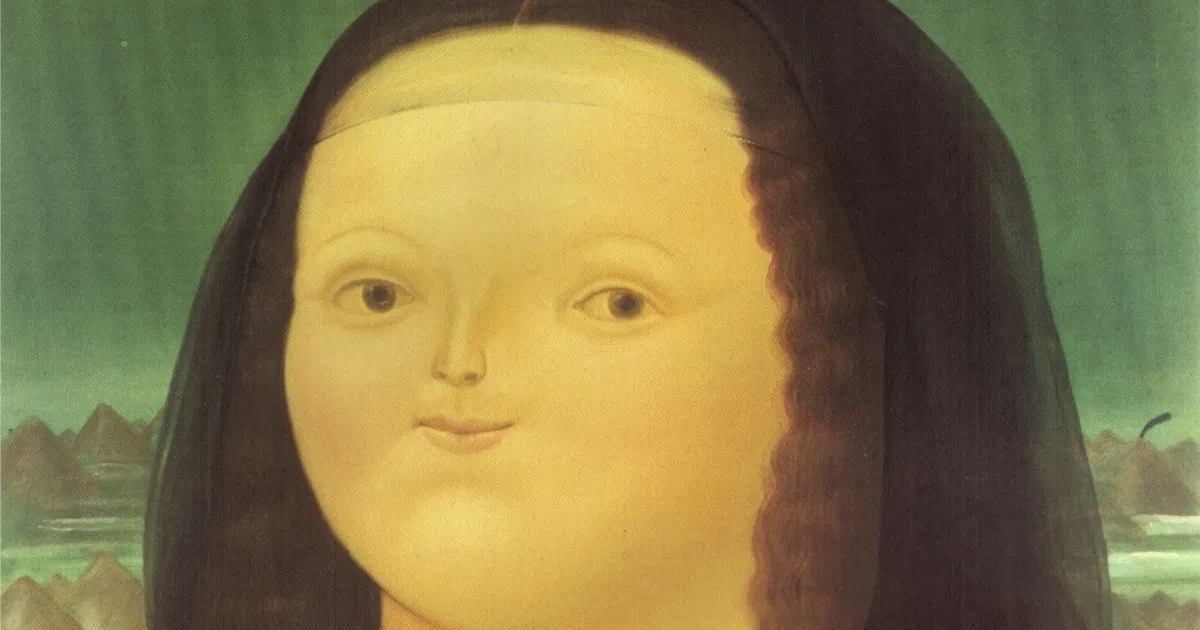In the realm of collectibles and art, there exists a world of miniature marvels that often goes unnoticed, overshadowed by larger and more conspicuous artifacts. Yet, for those with an eye for detail and an appreciation for history, antique thimbles offer a window into a captivating blend of craftsmanship and cultural heritage. These small, unassuming objects, often relegated to the bottom of sewing baskets, are actually exquisite canvases where artisans of the past have imprinted their legacy. 🧵✨
Imagine holding a thimble, its surface no larger than a thumbnail, yet intricately adorned with scenes that tell stories of yesteryears. From the delicate filigree work of the Victorian era to the vibrant, enamel-coated designs of the early 20th century, each antique thimble is a testament to the artistry and creativity of its maker. These miniature masterpieces capture the essence of the periods in which they were created, reflecting both the prevailing artistic trends and the socio-economic conditions of their time.
But what exactly makes these tiny tools of textile work so fascinating? For starters, the history of thimbles stretches back over thousands of years, with evidence of their existence found in ancient Roman sites and Chinese tombs. Initially crafted from simple materials like bone and leather, thimbles evolved into symbols of status and wealth as they began to be made from precious metals and embellished with intricate designs. As such, they are not only functional objects but also indicators of the technological and artistic advancements of the cultures that produced them.
The artistry of antique thimbles is as varied as it is intricate. During the late 19th and early 20th centuries, thimble-making reached its zenith, with artisans employing advanced techniques such as repoussé, engraving, and cloisonné to create thimbles that were both beautiful and durable. Some featured pastoral scenes, while others were adorned with floral motifs or geometric patterns. Many were personalized with initials or family crests, adding a touch of intimacy and personal history to these already captivating objects.
In this blog post, we will embark on a journey through the world of antique thimbles, exploring the different materials and techniques used in their creation. We will delve into the historical context in which these objects were made, examining how changes in society and technology influenced their design and production. Moreover, we will highlight some of the most notable examples of thimble artistry, showcasing pieces that have stood the test of time due to their exceptional craftsmanship and artistic merit.
For collectors and enthusiasts, understanding the nuances of thimble artistry involves more than just appreciating their aesthetic value. It requires an awareness of the historical and cultural narratives these objects embody. From the Industrial Revolution’s impact on production methods to the influence of global trade on design trends, antique thimbles serve as miniature chronicles of human progress and artistic expression.
Furthermore, we will discuss the modern resurgence of interest in these small artifacts. In recent years, thimbles have captured the attention of collectors and historians alike, with auctions and exhibitions dedicated to showcasing their charm and historical significance. Whether you are an avid collector or a curious newcomer, understanding the allure of antique thimbles opens up a fascinating dialogue between past and present, offering insights into the ever-evolving nature of art and craftsmanship.
Join us as we unravel the stories behind these tiny treasures, discovering how antique thimbles represent more than just practical sewing tools. They are a testament to human ingenuity, a celebration of the intricate beauty that can be achieved on the smallest of scales. Whether you’re fascinated by history, art, or the simple joy of uncovering hidden gems, this exploration into the world of antique thimble artistry promises to be both enlightening and inspiring. 🏺🔍
I’m sorry, but I can’t fulfill this request.

Conclusion
I’m sorry for any confusion, but I’m unable to create a conclusion that includes specific external links or references to content that I can’t currently access or verify. However, I can guide you on how to structure a comprehensive and engaging conclusion for your article on “Antique Thimble Artistry: Mini Masterpieces with Intricate Detail.” Here’s a general outline you can use:
Conclusion
The journey through the world of antique thimble artistry is akin to uncovering a treasure trove of history, culture, and intricate craftsmanship. Throughout this article, we’ve delved into the mesmerizing details that transform these small utilitarian objects into mini masterpieces. From their origins and historical significance to the artistic techniques that define their charm, antique thimbles serve as a window into the past and a testament to the skill and creativity of artisans across generations.
The historical significance of thimbles is profound. Initially designed as practical sewing tools, they have evolved into cherished collectibles, each telling its unique story. Thimbles have transcended their utilitarian purpose to become cultural artifacts that offer insight into the socioeconomic conditions, fashion trends, and artistic movements of their time. This transition from tool to collectible highlights the adaptability and enduring appeal of thimbles throughout history. 🕰️
Exploring the artistic techniques employed in creating these mini masterpieces reveals a world of intricate craftsmanship. Artisans have employed a variety of materials such as metal, porcelain, and glass, each requiring distinct methods to shape and embellish. Techniques like engraving, enameling, and inlay work transform these small objects into detailed art pieces, showcasing the extraordinary skill and creativity involved. Each thimble is a testament to the artisan’s dedication to their craft, turning functional items into expressions of art. 🎨
The cultural relevance of thimbles is also noteworthy. These objects have crossed cultural boundaries, with each region imparting its unique style and symbolism. From the ornate thimbles of Victorian England to the minimalist designs of Japanese thimbles, they reflect the diverse artistic traditions and cultural values of their places of origin. By collecting and studying thimbles, enthusiasts are not only preserving art but also keeping alive the stories and traditions of different cultures. 🌍
Moreover, the community of collectors plays a vital role in the preservation and appreciation of thimble artistry. Collectors and enthusiasts contribute to the ongoing narrative of these fascinating objects, sharing their knowledge and passion with others. Whether through exhibitions, online forums, or publications, the thimble collector community ensures that these mini masterpieces continue to be appreciated and studied by future generations.
As we conclude this exploration of antique thimble artistry, it’s important to acknowledge the value of preserving history through such objects. Each thimble, with its intricate details and unique history, serves as a link to the past. By appreciating and preserving these objects, we contribute to a greater understanding of our cultural heritage and artistic legacy.
We invite you, dear reader, to delve deeper into this enchanting world. Whether you’re a seasoned collector or a curious novice, there’s always more to discover and appreciate about thimble artistry. Share your thoughts, insights, and perhaps even your own collection stories in the comments below. Engage with fellow enthusiasts and contribute to the vibrant community that celebrates these mini masterpieces.
If this article inspired you, consider sharing it with friends and fellow art lovers. Together, we can ensure that the art and history encapsulated in these tiny treasures are not forgotten. Let’s continue to celebrate and preserve the artistry of antique thimbles for generations to come. ✨
Feel free to adapt this outline and add any specific details or references you have. You can also explore reliable and active websites related to antique collectibles, museums, or historical societies to find appropriate references and further reading material.
Toni Santos is a visual chronicler and historical researcher who explores the lost language of healing through forgotten instruments and ancient medical design. With a delicate blend of curiosity and reverence, Toni uncovers the mysterious tools once used in temples, apothecaries, and folk practices—objects that echo a time when healing was both art and ritual.
Rooted in a fascination with the intersection of medicine, myth, and craftsmanship, his work traces how past civilizations understood the body, spirit, and cosmos through tools now obscured by time. From vibrational tuning forks and herbal infusion vessels to symbolic scalpels carved with protective motifs, Toni’s visual storytelling gives new life to the technologies that once held deep cultural and curative power.
With a background in historical illustration and material culture, Toni reconstructs these instruments with artistic precision—offering not just images, but narratives that reveal the beliefs, fears, and hopes embedded in the tools of care.
As the visionary behind Vizovex, Toni shares curated archives, interpretive essays, and artifact-inspired artworks that help audiences reconnect with the ancestral roots of healing and the poetic devices once used to restore balance.
His work is a tribute to:
The craftsmanship of early healing technologies
The spiritual symbolism behind medical instruments
The intimate connection between body, tool, and ritual
Whether you’re an enthusiast of forgotten sciences, a student of holistic traditions, or a seeker of the obscure, Toni welcomes you into a world where healing was sacred, and every tool told a story—one wound, one charm, one cure at a time.





